
An icebreaker is a special-purpose ship or boat designed to move and navigate through ice-covered waters, and provide safe waterways for other boats and ships. Although the term usually refers to ice-breaking ships, it may also refer to smaller vessels, such as the icebreaking boats that were once used on the canals of the United Kingdom.
The name Sibir can refer to:

Lenin was a Russian icebreaker originally built in England for the Russian Empire. Launched in 1916, before going into service for Russia, the ship first served in the Royal Navy during the Allied intervention in the Russian Civil War. It was eventually acquired by the Soviet Union and served through World War II, and was scrapped in 1977.

Sadko was a Soviet icebreaker known for its role in scientific expeditions in the Arctic. Built as SS Lintrose in 1913 for ferry service in Newfoundland, she was sold to the government of the Russian Empire in 1915 and renamed Sadko. In Russia, she was used as a freighter in the Arctic before sinking in 1916.

The Arktika class is a Russian class of nuclear-powered icebreakers. Formerly known as Project 10520 nuclear-powered icebreaker, they were the world's largest and most powerful icebreakers until the 2016 launch of the first Project 22220 icebreaker, also named Arktika.
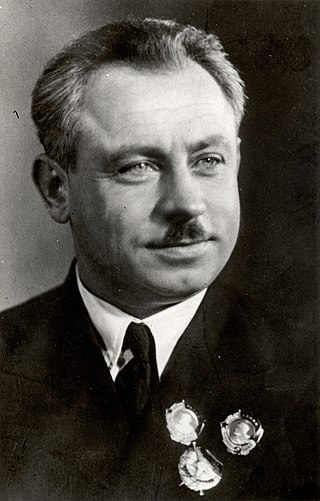
Ivan Dmitriyevich Papanin was a Soviet polar explorer, scientist, Counter Admiral, and twice Hero of the Soviet Union, who was awarded nine Orders of Lenin.

The OJSC Baltic Shipyard is one of the oldest shipyards in Russia and is part of United Shipbuilding Corporation today.
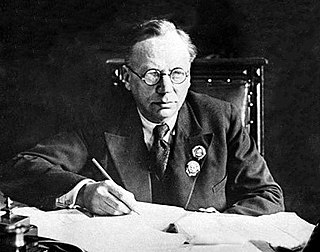
Vladimir Yulyevich Wiese was a Russian scientist of German descent who devoted his life to the study of the Arctic ice pack. His name is associated with the Scientific Prediction of Ice Conditions theory. Wiese was a member of the Soviet Arctic Institute and an authority on polar oceanography. He was also the founder of the Geographico-hydrological School of Oceanography.
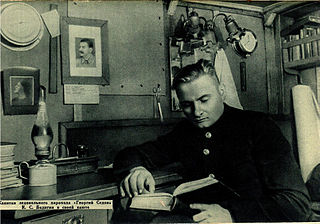
Captain Konstantin Sergeyevich Badygin was a Soviet naval officer, explorer, author, and scientist.
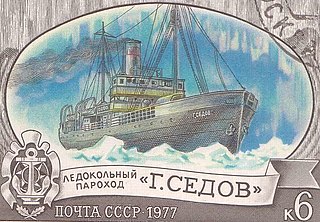
The Georgiy Sedov was a Soviet ice-breaker fitted with steam engines. She was originally the Newfoundland seal fishery support vessel Beothic and was renamed after Russian captain and polar explorer Georgy Yakovlevich Sedov in 1915.

The icebreaker Fyodor Litke was active in the Soviet era in the Arctic, until the late 1950s. It was built in 1909 in England for the Saint Lawrence River service and initially named CGC Earl Grey after Albert Grey, Governor General of Canada. After four years in Canada it was sold to the Russian government and eventually renamed Fyodor Litke in honour of the Arctic explorer Fyodor Petrovich Litke.

The Taymyr was an icebreaking steamer of 1200 tons built for the Russian Imperial Navy at St. Petersburg in 1909. It was named after the Taymyr Peninsula.
Steamer Tovarishch Stalin was a Soviet freighter of about 3,100 tonnes displacement, active in the Arctic during the 1930s.
SS Volodarskiy was a Soviet freighter of about 3,100 tonnes displacement which was active in the Arctic during the 1930s. This ship had been normally used for carrying timber.

The first icebreaker Krassin, or Krasin, was built for the Imperial Russian Navy as Svyatogor. She had a long, distinguished career in rescue operations, as well as a pathfinder and explorer of the Northern Sea Route. She has been fully restored to operating condition and is now a museum ship in Saint Petersburg.
Three icebreaking ships have been named Sibir:

Project 22220, also known through the Russian type size series designation LK-60Ya, is a series of Russian nuclear-powered icebreakers. The lead ship of the class, Arktika, was delivered in 2020 and surpassed the preceding Soviet-built series of nuclear-powered icebreakers as the largest and most powerful icebreaker in the world.
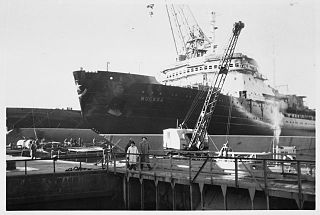
Moskva was a Soviet polar icebreaker and the lead ship of a series of five diesel-electric icebreakers named after major Soviet cities. She was built at Wärtsilä Hietalahti shipyard in Helsinki, Finland, in 1959 and when delivered was the largest and most powerful non-nuclear icebreaker ever built. Shortly after the dissolution of the Soviet Union, Moskva was decommissioned after a long and successful career along the Northern Sea Route and sold for scrap in 1992.
Sibir is a Russian Project 22220 nuclear-powered icebreaker. Built by Baltic Shipyard in Saint Petersburg, the vessel was laid down in 2015, launched in 2017, and delivered in December 2021.














